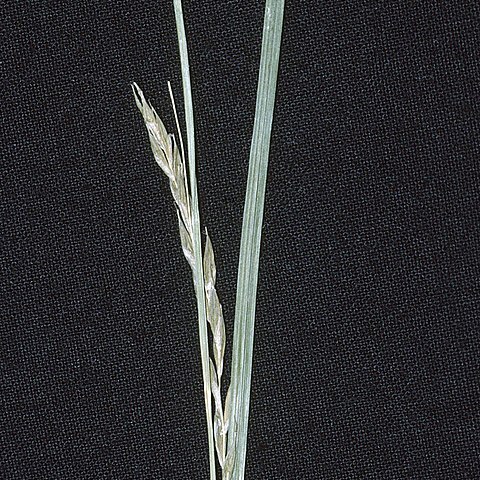Plants densely cespitose. Culms dark maroon at base; flowering stems 25–100 cm, as long as leaves at maturity or often longer, 0.5–1 mm thick, glabrous but scabrous within inflorescence. Leaves: basal sheaths maroon, bladeless, glabrous or rarely minutely pubescent; others grading from maroon to green on back, pale brown-hyaline or reddish brown on front, often red dotted, sometimes finely pubescent; blades flat, 2–7 mm wide, glabrous on both surfaces, margins and abaxial midribs often finely scabrous. Inflorescences: peduncles of lateral spikes slender, to 50 mm, usually shorter than spikes or only slightly longer, scabrous; of terminal spike 15–50 mm, finely scabrous; proximal bracts longer, or more often, shorter than inflorescences; sheaths 1–7 cm; blades 1–3.5 mm wide. Lateral spikes 2–5, 1 per node, well separated, erect at anthesis, soon nodding, pistillate with 10–25 perigynia attached 2–9 mm apart, linear, 25–80 × 2–3 mm. Terminal spike staminate or sometimes gynecandrous with a few pistillate flowers distally; 15–50 × 0.6–1.2 mm. Pistillate scales white-hyaline, sometimes tinged with pale brown or suffused with chestnut, with broad green midrib, finely red dotted, oblong, 2.8–6 mm, much shorter than mature perigynia, apex obtuse, acute or cuspidate, awn to 0.2 mm, glabrous, distal margin ciliate. Perigynia green to olive-green, usually red dotted, prominently 2-ribbed, finely 12–20-veined, loosely enveloping achene, fusiform to lance-ovoid, 5–9.5 × 1.1–2.2 mm, membranous, base acute, apex tapering gradually to abruptly contracted beak, glabrous or short-pubescent; beak bidentate 0.7–2 mm, including teeth to 1 mm. Achenes stipitate, 1.9–2.5 × 1–1.5 mm, stipe 0.5–1.5 mm.
More
Tufted, to 1 m, purplish at base; main lvs 2-4 mm wide; staminate spike 2-4 cm, very slender, sometimes with a few distal perigynia; pistillate spikes 2-4, well separated, very slender, spreading or nodding, 3-6 cm × 4 mm, very loosely fld, the perigynia separated by internodes 2-4(-6) mm; pistillate scales oblong to obovate, half as long as the perigynia, with hyaline or brownish margins and narrow green midvein; perigynia lanceolate to narrowly ovoid, obscurely trigonous, 4.7-8.3 mm, conspicuously 2-ribbed, obscurely several-nerved, narrowed to a beak; achene trigonous, the angles thickened, the sides concave below, borne on a slender stipe 0.5-1.5 mm; 2n=60. Nf. to n. Mich. and Wis., s. to Fla. and Tex. Three vars.


